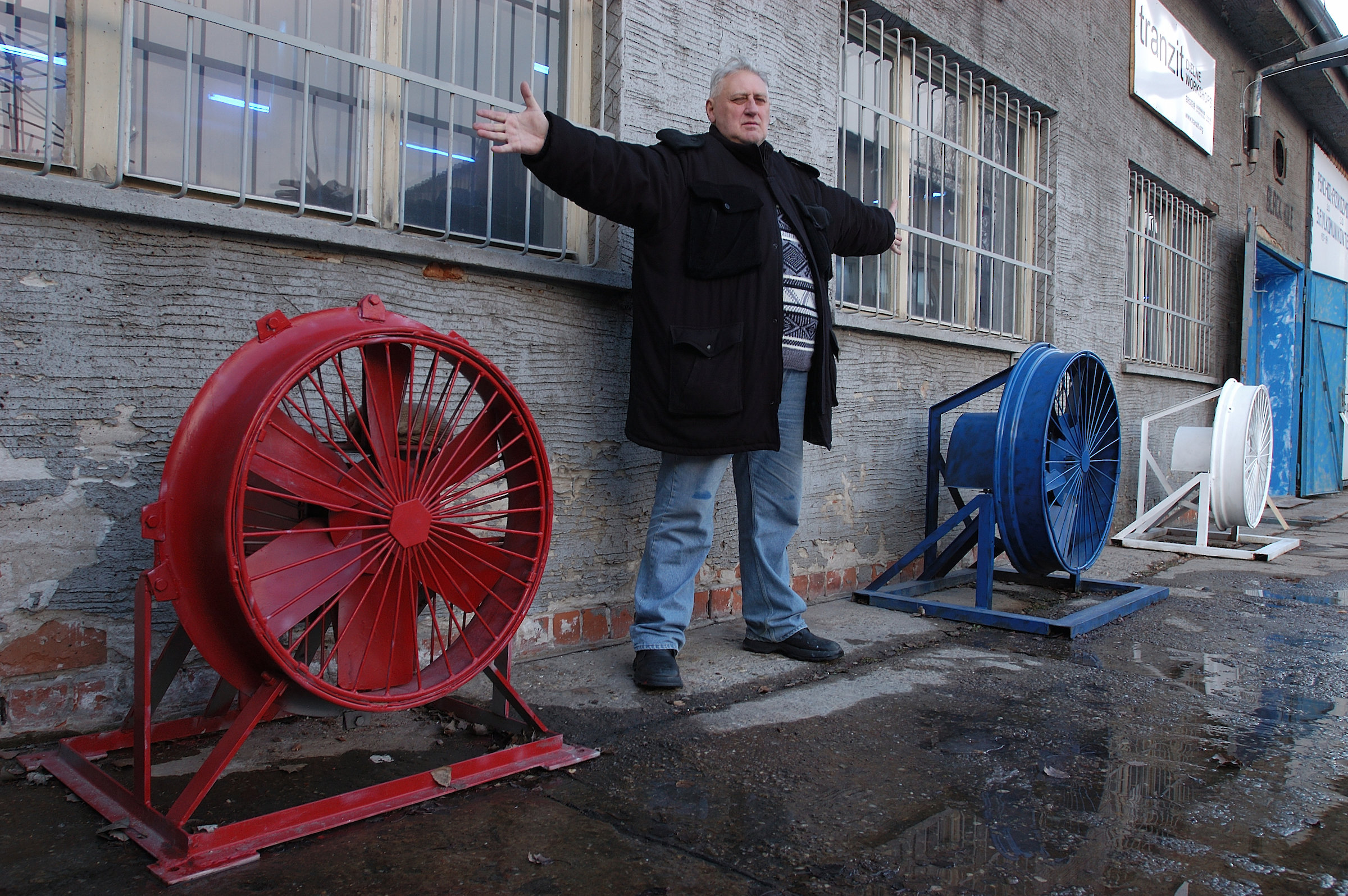First Insight
Foyer Ground floor

Vietor, 1967/ca. 1995
Metal, synthetic paint, electric cable
3 objects, each 120 × 135 × 135 cm
Towards the late 1960s the System SF consisted in its first development phase of three main axes, based on the colors red, blue, and white. The works on show in the foyer of HALLE FÜR KUNST were all begun in this early phase.
Red, blue, and white, the artist’s decisive colors, flank the visitors upon entering in the form of in the form of the installation Wind (1967÷1995), consisting of three painted fans. In Filko’s interpretation each of the three colors symbolizes a different field of being and is the expression of a certain dimension. Red is the color of the 3rd dimension and includes the material world and biology. Blue represents the 4th dimension, the cosmos that contains on the one hand space and time and on the other artistic consciousness. Finally, white is this highest 5th dimension, embodying spirituality, the void or vacuum and death. By connecting these turbine-like objects and using this color sequence, Wind presents these dimensions as the central energy sources of the system. At the same time this work raises questions as to the consistency and yet also inherent openness and irony in Filko’s systemic thinking.
On the surface of the object 7 Chakra Colors Bench (2000) Filko repeats the fixed color sequence of the seven chakras. The object shows Filko’s affinity for everyday objects, which he frequently integrated into his works as found ready-mades declared art or as rearranged and partially reworked assemblages. As a painted-over bench this object illustrates the proximity of art and life by means of a harmony of functionality and aesthetics.
A colorfully painted frame of iron pipes that looks like a clothes rack is the basis of The Monument – Czechoslovak Flag (1968÷1993). Originally this sculpture was painted red, blue, and white, but decades later Filko overpainted it with the seven-part color system. Filko refers here to the colors of the flag of Czechoslovakia, which at the time of the Prague Spring and the “empire” of the Soviet Union had gained a new meaning, full of hope for (relative) freedom and then bitter disappointment. Filko here reinterprets it within his own system and creates a kind of “anti-monument” that follows his own ideas and “laws” outside the scope of the national and totalitarian context.
The rocket motif is recurring in Filko’s oeuvre. The artist’s use of rocket shapes goes back to as early as the mid-1960s, as seen in the fifteen-part work in red, Priestor – Space X. – Rockets (1967), presented in the foyer, in which the outlines of rockets and other planetary shapes are traced.
Wind / Vietor, 1967/ca. 1995
Metal, synthetic paint, electric cable
3 Objekte, je / objects, each 120 x 135 x 135 cm
7 Chakra Colors Bench / Lavička vo farbách 7 čakier, ca. 2000
Found object, wood, acrylic
107 × 30 × 80 cm
The Monument – Czechoslovak Flag / Pomník – zástava Československa, 1968/1993
Metal, paint
220 × 80 × 50 cm
The Monument – Czechoslovak Flag / Pomník – zástava Československa, 1968/1993
Facsimile, B/W photograph (24 x 9 cm) enlargened/framed, whitening liquid, felt-tip pen, paper
60 x 23 cm
Priestor – Space X. – Rockets / Priestor – Space X. – Rakety, 1967
Paint, metal
15 objects, variable dimensions
DSUQ 4.D. Rocket / DSQ 4.D. Raketa, 2000
Metal sheet, acrylic
400 x 49 x 49 cm
All works Courtesy Linea Collection, Bratislava; Layr, Vienna